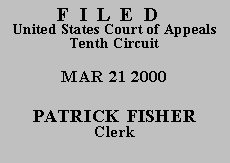 UNITED STATES COURT OF APPEALS
UNITED STATES COURT OF APPEALS
 UNITED STATES COURT OF APPEALS
UNITED STATES COURT OF APPEALS
TENTH CIRCUIT
| UNITED STATES OF AMERICA, | |
| v. | No. 99-3261 |
| EDUARDO MORUARTE-JIMENEZ, | (D.C. No. 98-CR-40079-3-SAC)
(D. Kan.) |
ORDER AND JUDGMENT(*)
Before BALDOCK, HENRY, and LUCERO, Circuit Judges.(**)
Pursuant to a plea agreement, Defendant Eduardo Moruarte-Jimenez pled guilty to one count of interstate cocaine trafficking in violation of 18 U.S.C. § 1952 and 21 U.S.C. § 841, and one count of conspiracy to commit interstate cocaine trafficking in violation of 18 U.S.C. §§ 371 & 1952 and 21 U.S.C. § 841. Consistent with U.S.S.G. § 3D1.2(b), the district court "grouped" the two counts to attain a combined offense level of 29. See id., comment. (n. 4) (court should group multiple counts where one count charges a conspiracy and the other count charges a substantive offense that was the sole object of the conspiracy). This offense level, coupled with a criminal history category of IV, resulted in a guideline range for Defendant of 121 to 151 months. Because both the substantive and conspiracy counts carried a statutory maximum sentence of only 60 months imprisonment, see 18 U.S.C. § 1952(a)(3)(A), the court applied U.S.S.G. § 5G1.2(d) and sentenced Defendant to two consecutive sentences of 60-months imprisonment.
Section 5G1.2(d) provides:
If the sentence imposed on the count carrying the highest statutory maximum is less than the total punishment, then the sentence imposed on one or more of the other counts shall run consecutively, but only to the extent necessary to produce a combined sentence equal to the total punishment. In all other respects, sentences on all counts shall run concurrently, except to the extent otherwise required by law.
Id. Because a 60-month sentence of imprisonment was less than the "total punishment," defined as that "determined by the adjusted combined offense level," id. comment., the court imposed consecutive sentences on the two counts that when combined approached the "total punishment" as calculated under the guidelines. According to Defendant, the district court erred in imposing consecutive rather than concurrent sentences on him. We disagree.
We are persuaded by our decision in United States v. Riley, No. 95-6398, 1996 WL 709935 (10th Cir. Dec. 11, 1996) (unpublished). In that case, the district court determined that defendant's adjusted grouped offense level for two counts of distribution of ephedrine was 168 to 210 months. Because the highest statutory maximum sentence on the first count was 120 months, the district court sentenced defendant to consecutive terms of imprisonment of 120 months and 78 months, which when combined fell within the guideline range. Id. *3. Citing our decision in United States v. Nelson, 54 F.3d 1540, 1547 (10th Cir. 1995), we stated: "The plain language of U.S.S.G. § 5G1.2(d) . . . allows consecutive terms so long as the 'total punishment' as determined by the adjusted combined offense level is not exceeded." Riley, 1996 WL 709935 at *3. See also United States v. Moreno-Hernandez, 48 F.3d 1112 (9th Cir. 1995); United States v. Prince, No. 98-4021, 1999 WL 2551 at *1 (4th Cir. Jan. 5, 1999) (unpublished).
In this case, Defendant's total sentence of 120 months imprisonment did not exceed the 121 month to 151 month range calculated under the sentencing guidelines. Accordingly, the judgment of the district court is
AFFIRMED.
Entered for the Court,
Bobby R. Baldock
Circuit Judge
*. This order and judgment is not binding precedent, except under the doctrines of law of the case, res judicata, and collateral estoppel. The court generally disfavors the citation of orders and judgments; nevertheless, an order and judgment may be cited under the terms and conditions of 10th Cir. R. 36.3.
**. After examining the briefs and appellate record, this panel has determined unanimously that oral argument would not materially assist the determination of this appeal. See Fed. R. App. P. 34(a)(2)(C); 10th Cir. R. 34.1(G). The case is therefore ordered submitted without oral argument.